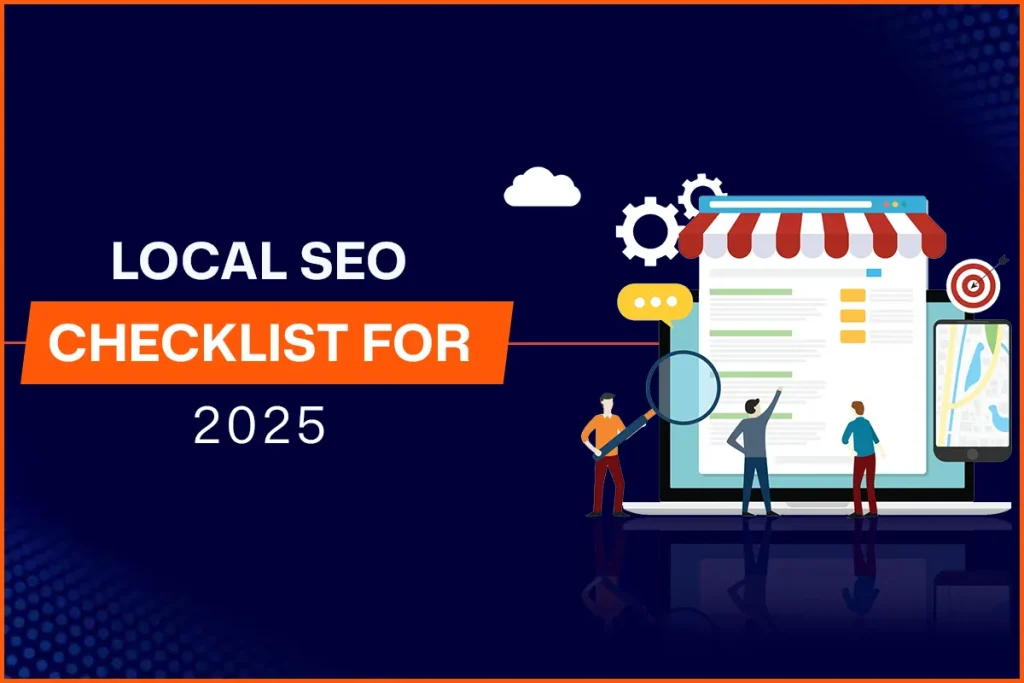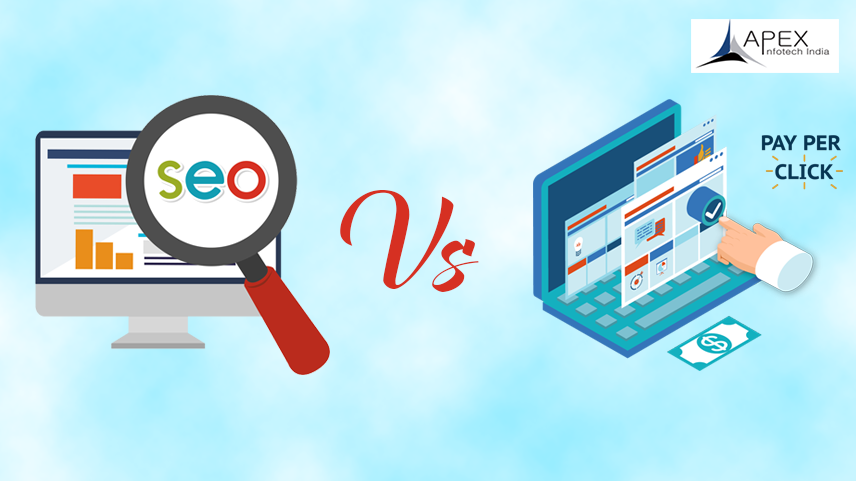You are new to the SEO game. You have just learned your way around keywords, backlinks, and meta tags, and with no warnings whatsoever, you have been introduced to the enigma that is ‘LOCAL SEO’. What now?
Firstly, let’s get our basics cleared. Local SEO is a way to help your business dominate search results when people nearby are looking for your products or services online.
It is fair to wonder, is Local SEO even worth it? Especially if you’re already actively implementing all other types of SEO, does local SEO drive better results?
Let’s break that down before we take you through a simplified Local SEO checklist, perfect for your first steps into SEO focused on local growth.
Why is Local SEO Important?
Imagine you’re a dentist in Kalyani Nagar, Pune. Your potential patient, who requires a wisdom tooth removal procedure urgently, is looking for “dentists in Kalyani Nagar.” However, search results show them to your competitors instead.
Had you been dedicatedly performing Local SEO, it would have borne different results. Your name would have appeared among the top results in the Google Local Pack, along with complete information about your address, phone number, patient reviews, and ratings. Just like that, you would have gained a new patient.
This was just one example. No matter your category, local SEO converts nearby searchers into actual footfall.
Take a look at these stats:
- Searches with “near me” have increased by over 900% in the past few years
- 76% of people who search for a business on mobile visit it within a day
- 80% of local searches convert
- 30% of all mobile searches relate to location
- Businesses with verified Google Business Profiles get 2.7× more engagement
These numbers affirm the increasing necessity to practice Local SEO.
Who is it for?
If you own a business with a physical presence, and if it matters to you that people in your area know you and approach you first for the service you offer or product you sell, local SEO services are for you.
Local SEO is a must for:
- Restaurant/Cafe/Bakery
- Hotel
- Retail Store
- Medical Practice
- Plumbing Business
- Coaching Class
- Salon or Parlour
- Cleaning Services
Now that we know what Local SEO is and why it is so important for businesses, let’s finally uncover the Local SEO Checklist for this year.
We’ll walk you through every step of the process, and we’ll familiarize you with every latest update of 2025 that you know while practising local SEO.
1. Set up Google Search Console
If you’ve already been dabbling in general SEO strategies, chances are you already have one. But in case you haven’t, here’s a sign you should!
It’s important to track your progress, and Google Console allows you to do exactly that. You can go one step further and create Google Analytics account for deeper insights.
GSC is an incredibly insightful tool that tells you how your website is performing on Google, what keywords you’re showing up for, and what specific pages users are visiting the most.
It lets you check if your site has been indexed and how it is ranking on Search Engine Result Pages (SERPs).
Best of all, it provides a clear picture of how your site is performing locally. You can see keywords users in your area are searching for, check how often they’re clicking on your site, and lastly, you can improve the below-average pages for a stronger local SEO ranking.
2. Set up and Optimize Google My Business
Google Business Profile and Local SEO are so closely knit, they’re even used interchangeably! Point being, this step is an absolute non-negotiable.
Formerly known as Google My Business (GMB), this is a free and simple tool that helps businesses manage their online presence, especially on Google Search and Maps. Your GBP features all of your business’s key details, like NAP – name, address, and phone number – as a core element in any local SEO checklist.
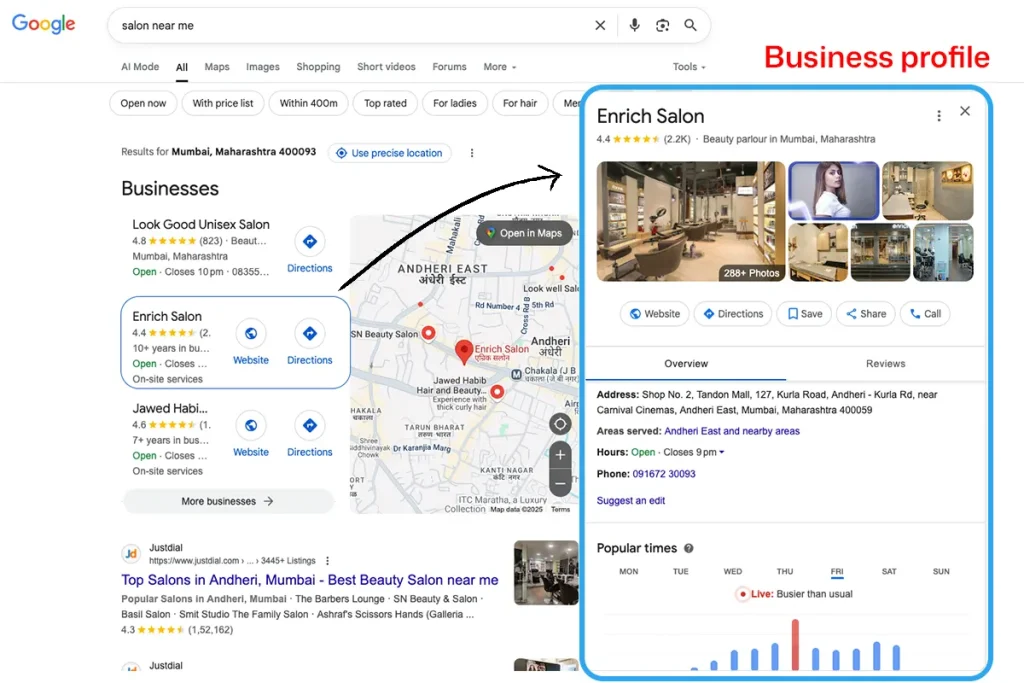
Setting up a GBP is your ticket to being listed on Google Maps. But in order to actually rank in the Local Pack, you will have to optimize your GBP. For that, you need to:
- Choose a category from the Google Business Category List that best describes your business.
- Research local keywords and draft a locally relevant content strategy.
- Add relevant and attractive images in your GBP, website, etc.
- Maintaining high ratings and responding to the reviews on time.
- Posting updates consistently
3. Manage Citations
Apart from optimizing your GBP, it is equally important to build local citations on top websites relevant to your niche. This can include business directories, review sites, aggregate blogs, industry-specific sites, and social media profiles.
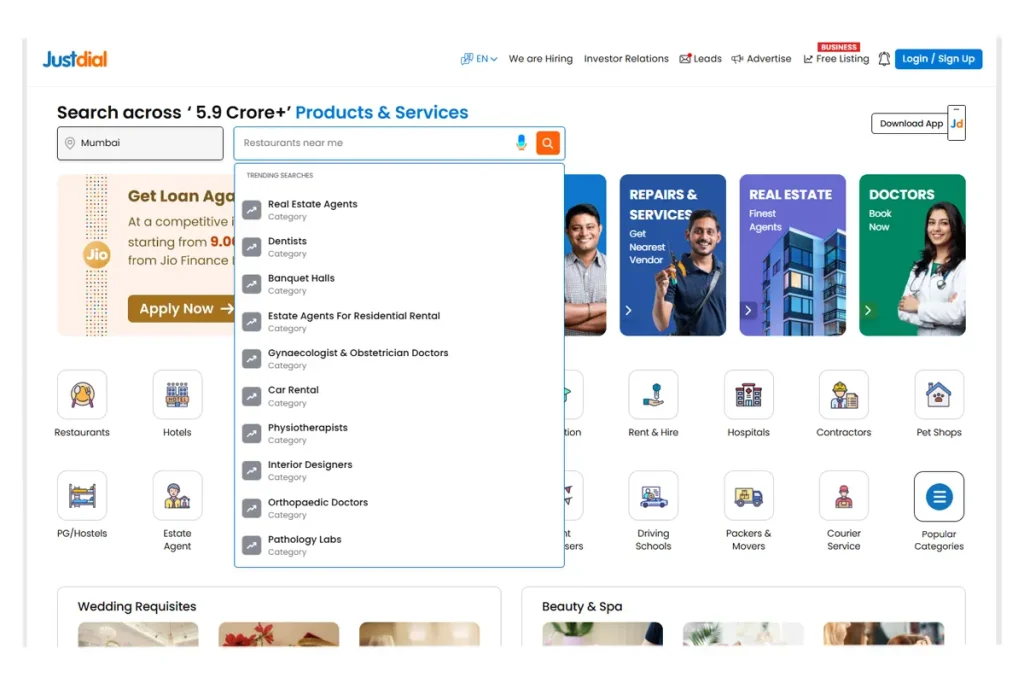
Local citations refer to online mentions of your business’s NAP (name, address, phone number). These citations have the power to boost your GBP’s ranking on search engine results.
When building local citations, you must add your:
- Name
- Address
- Phone Number
- Social Media Profile Links
Make sure all these details are consistent across every platform. Update all outdated information (old address, inactive phone number). Even a small mismatch in your basic details can lead to mistrust among the visitors and Google as well. This can impact your SEO severely.
Branding consistency is also very important for brand recall. Ensure that your business name, logo, and tagline remain the same throughout all the citations.
4. Use Local Keywords
Local SEO is impossible without proper local keyword research. These are words or phrases people are searching to look for your service/product in your special geographic area.
If you target those specific keywords in your website content, it increases the chance of you appearing in those local searches.
So, how do you find the right local keywords? First off, you can utilize Google’s autocomplete feature. It’ll tell you what the popular searches are in your niche.
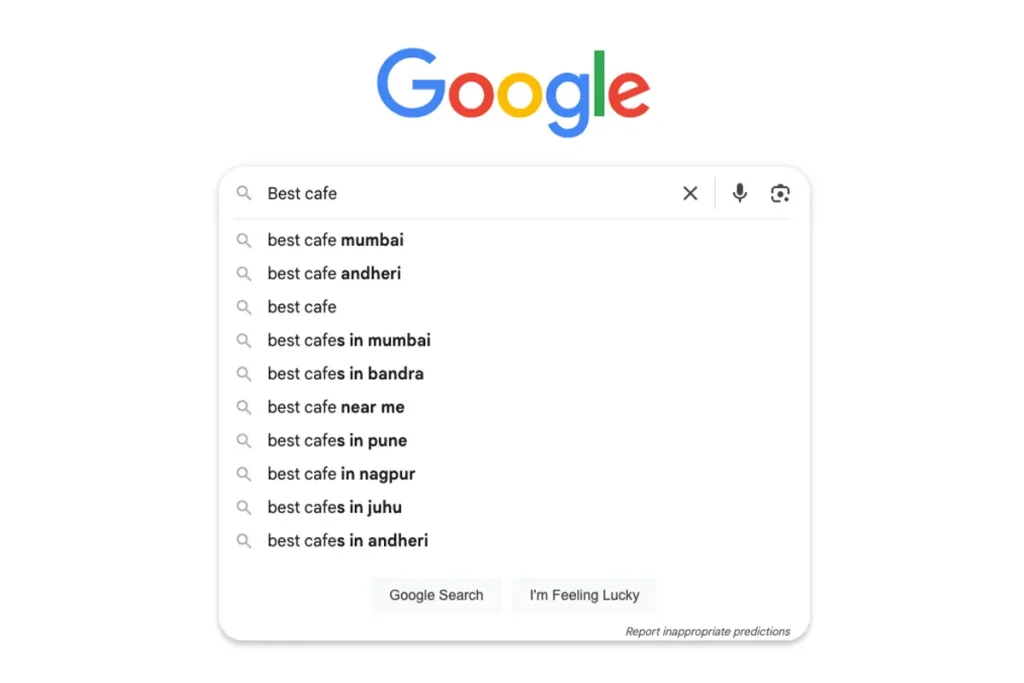
You can also use tools like AnswerThePublic and Semrush to discover more synonymous keywords and form a whole cluster of related keywords.
Once you have found high-volume, low-competition keywords, you can make them more localised by adding modifiers like:
- “near me”,
- “ in Mumbai” (or your city)
- “where do I find (service) in (location)”
- best (service) in (location)”
It is also helpful to check what keywords your pages are already ranking for using Google Search Console or Semrush. In this way, you can build on existing visibility and improve pages that show promise.
5. Create Location Pages
Google takes into account how close the physical location of your business is to the searcher. So if your business operates in more than one locality, you should create a separate dedicated page for each.
For instance, we created individual location pages for one of our clients with clinics in different parts of the city. We embedded locally relevant keywords and followed a detailed on-page SEO checklist. The results were impressive. These pages started ranking within weeks of publishing.
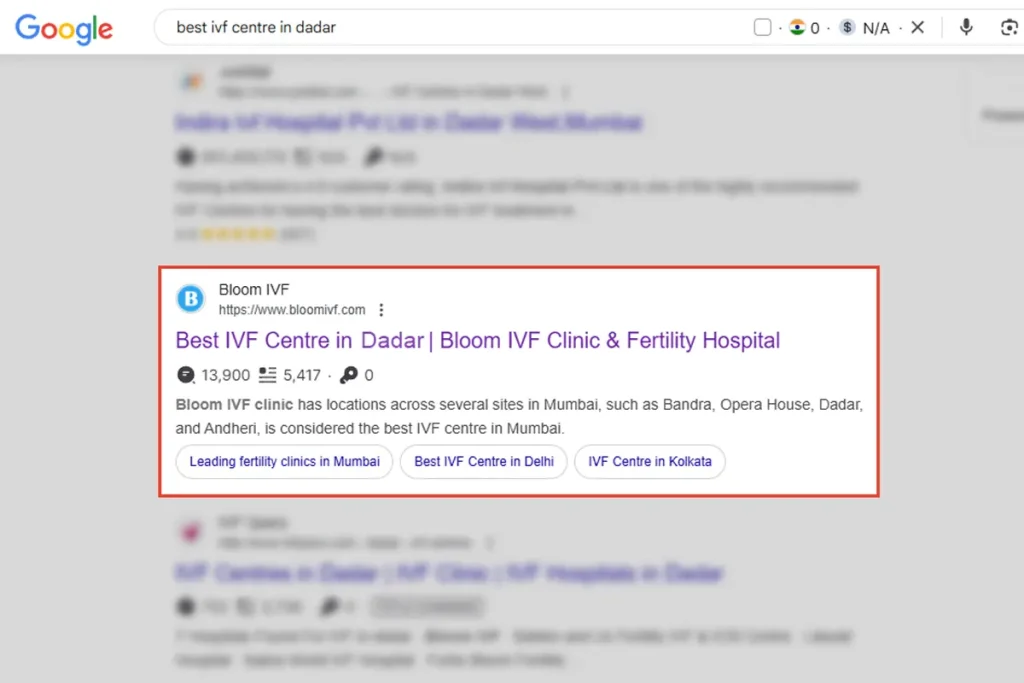
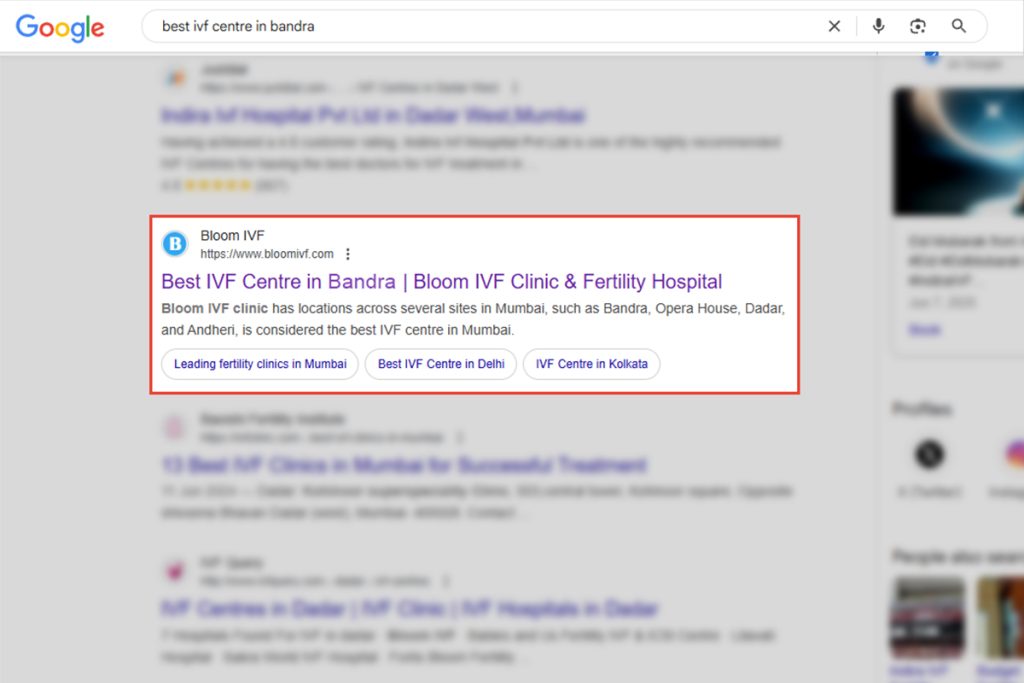
Make sure that each one has its NAP details in multiple spots, such as the header, banner, and footer. NAP, too, should be crawlable and not a part of an image.
Since these are individual pages, they’ll have their own URL. Ensure these URLs are descriptive, keyword-rich, and most importantly, they contain a local keyword.
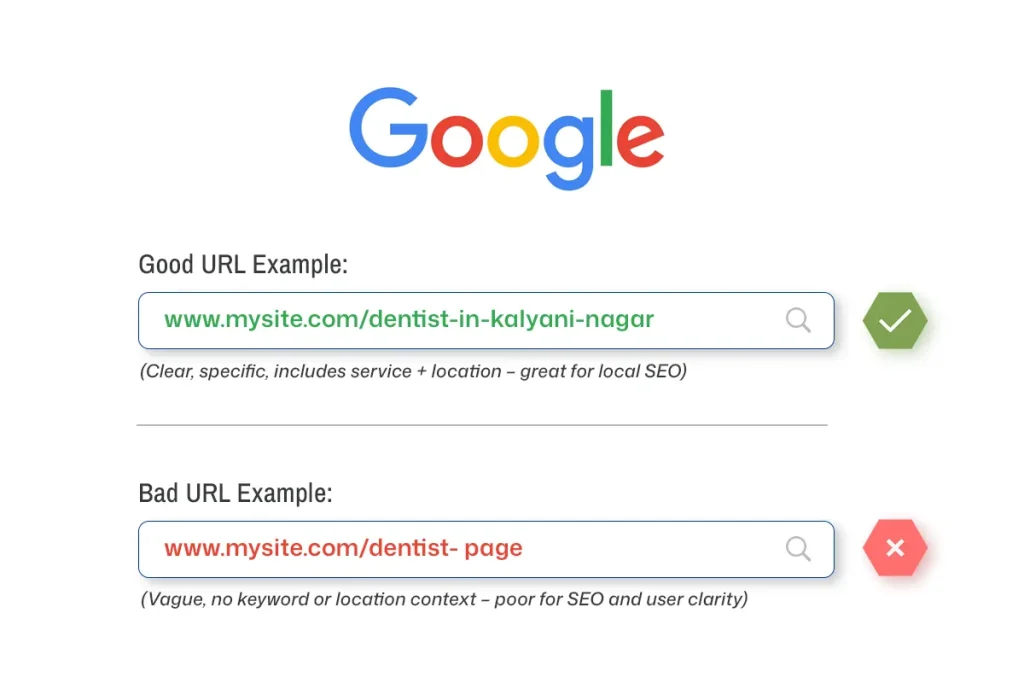
You can also create a separate GBP for each of these pages. These individual profiles will have their own ratings, reviews, photos, etc. This increases the chances of your business showing up when someone in your area is searching for the service you provide.
6. Create Hyperlocal Backlinks
Creating high-quality backlinks is a practice you must be familiar with if you’ve worked on off-page SEO. In Local SEO, the concept remains the same, except you create these backlinks in locally relevant sites. This proves your business as credible and trusted within the local community.
You could build backlinks from:
- Local Businesses ( if you sell protein shakes, you could partner with a nearby gym)
- Local Organizations ( schools, NGOs, clubs)
- Media Outlets ( city-based news portals, lifestyle blogs, press releases)
- Community Blogs (hyperlocal bloggers and influencers write about businesses)
Studying the competitors can be helpful, as you can analyse their backlinks and secure other potential links.
Securing local backlinks will not only increase your credibility but also the clicks you get. Search engines read backlinks as a vote of confidence. The more relevant and authoritative these links are, the more they improve your local search rankings.
7. Maintain Positive Reviews and High Ratings
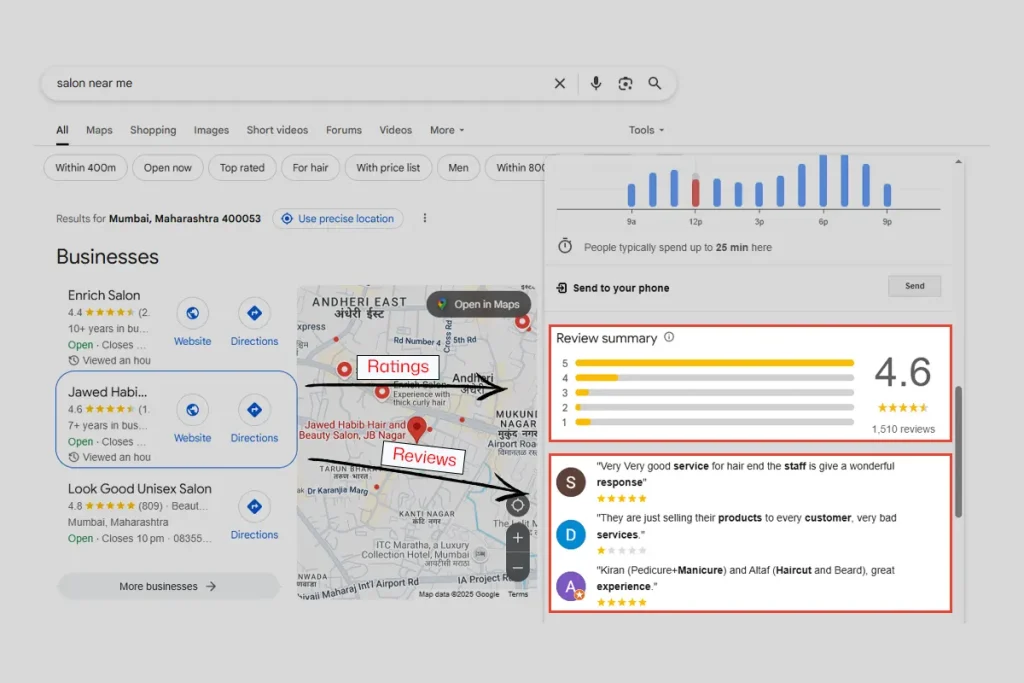
Google needs social proof to highlight your business. Hence, well-rated and reviewed businesses generally have an excellent online presence.
Not just Google, but about 90% of users read the reviews before availing the services of a local business. So you should encourage your existing customers (service takers) to drop in their positive reviews and testimonials on Google reviews.
But remember, collecting reviews isn’t enough; you must actively reply to them. This shows the customer that you value their feedback, and also inspires other customers to drop a review.
There’s not much you can do about the negative reviews, except respond to them in a dignified and professional manner. Sometimes, taking accountability or even offering direct support can go a long way.
8. Social Media Strategy
Social Media is highly underutilized for local SEO, mainly because not many know how impactful it can be. That’s understandable, after all, Google has never explicitly stated any relation between social media and ranking on search result pages.
But depending on your product/ service, customers turn to social media to verify your credibility. For example, when searching for “dance studio mumbai”, Google lists a couple of Instagram accounts on Page 1.
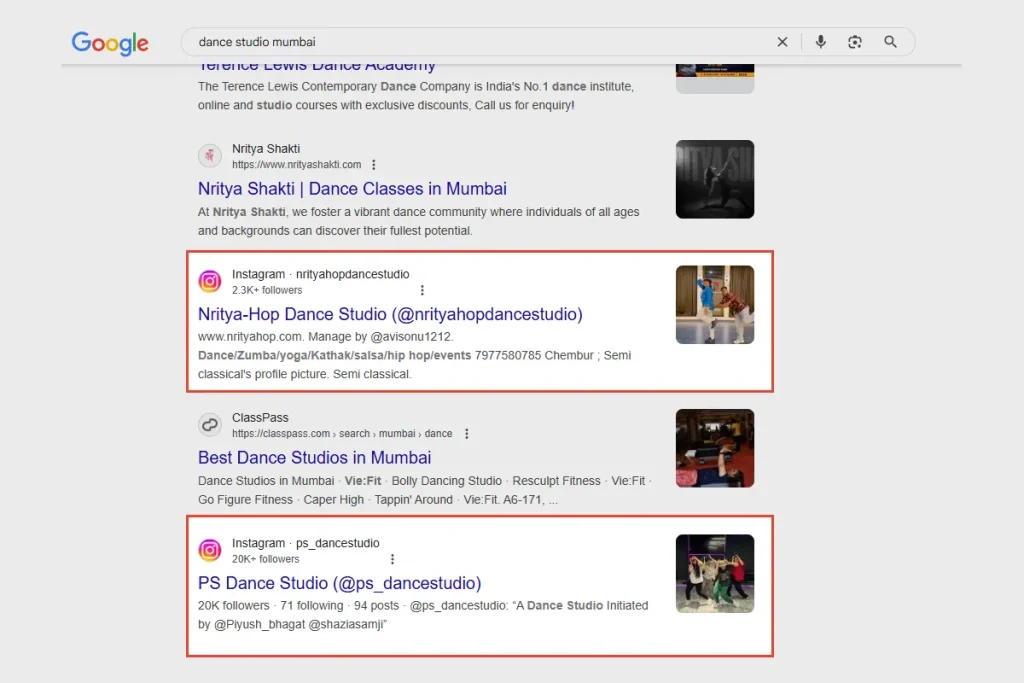
This might be a gap that maybe you too can take advantage of!
So, what is the right social media strategy? Firstly, identify the social media platforms where most of your potential customers might be.
For example, an SEO agency can find clients on LinkedIn. A wedding photographer might have people look them up on Instagram. Or you can simply maintain a presence on all important social media sites. Next, you create value-added, entertaining content, or simply content that showcases your work, and post it consistently.
9. Track Your Progress
Like most SEO efforts, you can’t gauge the success of your local SEO strategy overnight. But it is important that you monitor its performance regularly. These insights are necessary to further optimize on the basis of audience engagement, updates in algorithms, and competitor activity.
You already have a Google Search Console in place, but tools like Semrush, Google Analytics can help track every little aspect of your performance. You also use Google Business Insights to see how well your Google Business Profile is faring.
Make strategic decisions based on these inferences. For example, if one location page is doing well, replicate the same approach with other location pages as well.
The Final Checklist
Before you go, here’s a quick recap of everything your business needs to rank better locally:
- Google Search Console set up and linked
- Google Business Profile claimed and optimized
- Consistent citations created on all major directories
- In-depth local keyword research completed
- Location pages created and optimized for each area
- High-authority local backlinks built
- Reviews and ratings collected and managed professionally
- Social media profiles localized and active
- Performance tracked regularly using SEO tools
Final Thoughts
Tapping into local SEO ranking factors is no longer just a matter of choice; it is a must for every business owner who depends on walk-in customers and patients. Be it a retail store, a doctor, or a cafe, implementing this local SEO checklist can improve your discoverability in “near me” searches.
That said, practicing local SEO can be a daunting task. There is no harm in getting help from a credible SEO agency in Mumbai. Apex Infotech, offers Local SEO services India, as a part of our broader SEO and digital marketing solutions.
We combine deep technical excellence with content strategy backed by real-time local market insights. From optimizing GBP, to earning hyper-local backlinks, to creating location pages- we handle it all, so you can focus on your business.
Frequently Asked Questions
What are local SEO keywords?
Local SEO keywords are search terms that people of a specific geographic location are searching for. They can be used in website content of businesses in or near that location, to appear higher in search results.
What are local SEO services?
Local SEO includes optimizing your website and Google Business Profile to appear in search results when users in your physical location look for your products or services. This involves using local keywords, building citations, earning positive reviews, and more.
What is a local listing in SEO?
A local listing refers to your business profile on platforms like Google, Bing, or directories like Justdial, IndiaMart, or Sulekha. These listings feature your NAP details, reviews, and services to users in your area.
How can I start Local SEO as a beginner?
Start with the basics:
Set up Google Search Console
Optimize your site content with proper on-page SEO techniques
Create a Google Business Profile
Use tools like Ubersuggest or AnswerThePublic for local keyword research
Follow this local SEO checklist step-by-step
What category should I choose for Google Business Profile?
Always select the category that most directly represents your primary service. Refer to the Google Business Category List for all available options and pick the one that aligns best with your business.
What are local SEO services for small businesses?
Local SEO services for small business are specialized strategies formulated to help businesses with a physical location appear in local search results. These services generally include optimizing your Google Business Profile, creating a location-specific content strategy, managing online citations, building local backlinks, etc.

